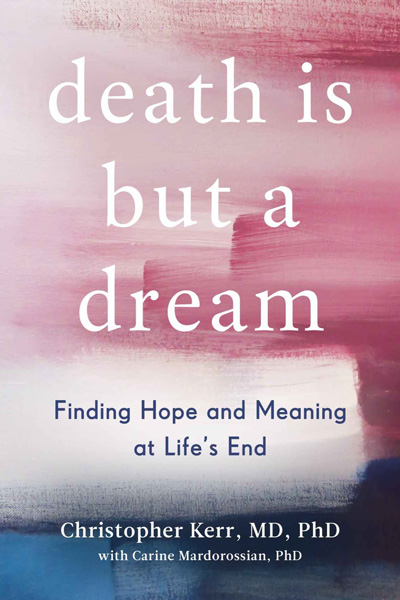
A Hospice doctor shares his experience witnessing the paradox of dying: patients on their death bed are often more emotionally and spiritually alive
—
Becoming a doctor is a process with a beginning, middle, and no end. One day, just when the young doctor thinks they have mastered the science of medicine, they will meet a patient who summons them to go beyond tending to the bodily needs in order to tend to the soul. This moment will hold a lesson in empathy the doctor will never forget, the first of many through which they will find the true richness of their calling. For me, the patient who first guided me through that moment was Mary.
Mary was a seventy-year old artist and mother of four, and one of my first patients at Hospice. At the time of my visit to her room, her ‘whole gang’, as she called them, was gathered around her bedside sharing a bottle of wine. It was a low-key family affair, with Mary appearing to enjoy the company of her brood, even as she drifted in and out of alertness. But then something odd happened.
With no prompting whatsoever, Mary started to cuddle a baby only she could see. Sitting up in her hospital bed, it was as if she’d lost touch with the here and now and was acting out a scene from a play, kissing this imaginary baby in her arms, cooing to him, stroking his head, and calling him Danny. Even more striking, this incomprehensible moment of maternal connection seemed to have put her in a state of bliss. Her kids all looked at me, uttering variations of “What’s happening? Is she hallucinating? This is a drug reaction, right?”
I may not have been unable to explain what was happening or why, but I did understand that the only appropriate response at that moment was the absence of any medical intervention.
There was no pain to alleviate, no medical concern to address. What I saw was a human being experiencing an unseen yet tangible love beyond my medical understanding and reach.
I watched, in awe, as did her four children. After their initial outburst, they were now overcome with emotion, no small part of which was due to their relief at seeing their mother’s serenity. She did not need them, any more than she needed me, to intervene, make a decision, or say something that could or would alter the course of her last moments. Mary was tapping into an inner resource none of us knew she had. The feeling of gratitude and peace that overtook us was like no other.
The next day, Mary’s sister came in from out of town and unraveled the mystery. Long before any of Mary’s four children came into the world, she had given birth to a stillborn child she had named Danny. She was overcome with grief after losing the baby, but she’d never spoken of it, which is why none of her surviving offspring even knew about him. Yet in this moment, with death waiting in the wings, the experience of new life had returned to Mary in a manner that clearly provided warmth and love, and maybe even some small compensation for her loss. At death’s door, she was revisiting her past trauma as a wrong redressed. She had reached a palpable level of acceptance, and even looked like a younger version of herself.
Mary’s physical ills couldn’t be cured, but it appeared that her spiritual wounds were being tended.
Not long after this remarkable episode, Mary died peacefully, but not before transforming what I understood ‘dying peacefully’ to mean. There was something intrinsic to Mary’s dying process that was not only therapeutic but that unfolded independently from the ministrations of her caretakers, including her doctor.
Watch the author’s TEDx talk on his observations on dying
Ultimately, it was the remarkable incidence of pre-death dreams and visions among my dying patients that made me realize how significant a phenomenon this was, both at a clinical and human level. As a Hospice doctor, I have been at the bedside of thousands of patients who, in the face of death, often speak of love, meaning, and grace. They reveal that there is often hope beyond cure as they transition from a focus on cure to notions of personal meaning.
As illness advances, grace and grit collide.
With that collision often comes new insight to those dying as well as to their loved ones, insight that is often paradoxically life-affirming. This experience includes pre-death dreams and visions that are manifestations of this time of integration and coming into oneself. These are powerful and stirring experiences that occur in the last days or hours of life and that constitute moments of genuine insight and vivid re-centering for patients. These experiences often mark a clear transition from distress to acceptance, bringing with it a sense of tranquility and wholeness for the dying.
I am a doctor, so I accept that all of my patients will die. But dying is more than the suffering we either observe or experience.
Beyond the obvious loss, there is light within the darkness as new insights emerge that can hold profound meaning. This is when dying patients often find a path to affirming the love they felt, the relationships they cherished, and the beauty of life they led. This is when they allow themselves to experience true enlightenment.
You may also enjoy reading Dying Every Day: Exploring Life and the Near-Death Experience with Reincarnate Buddhist Lama Mingyur Rinpoche by Peter Occhiogrosso
